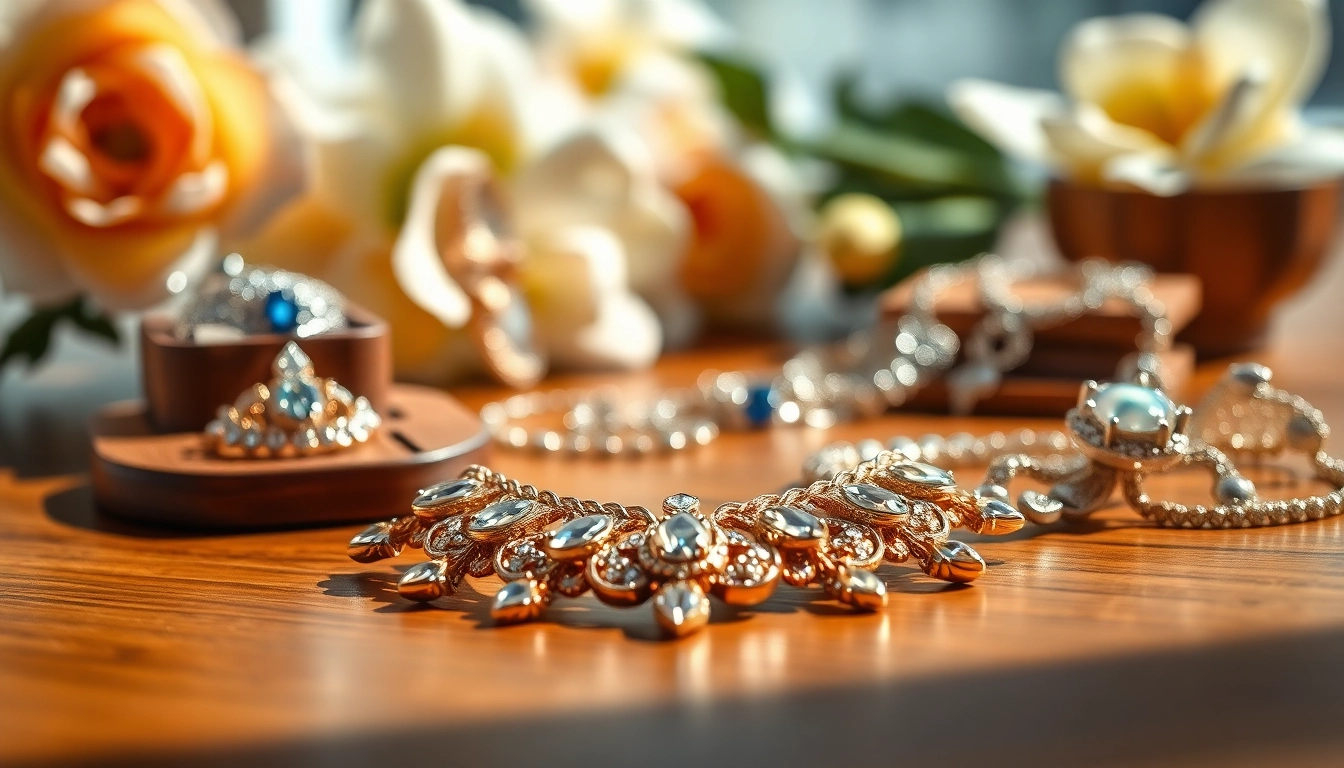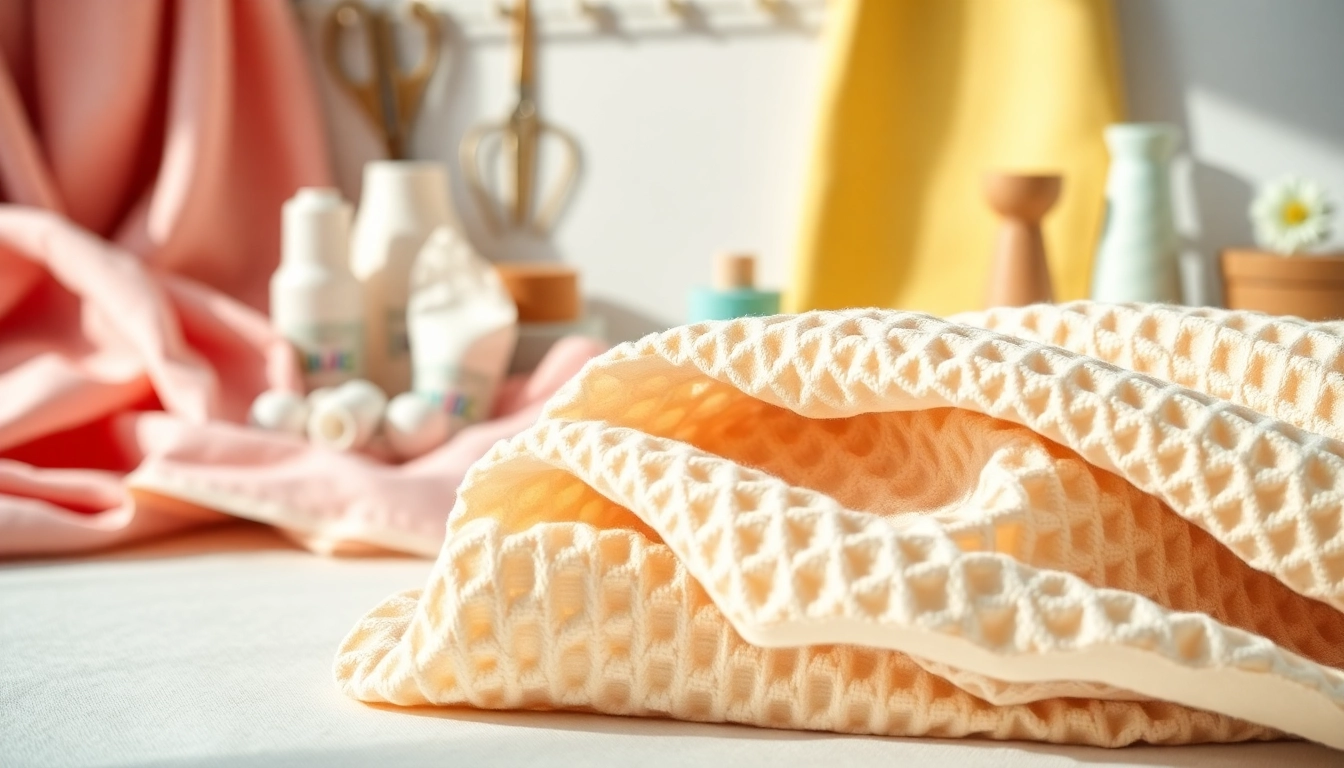Understanding Jewelry: Types and Trends
Different Types of Jewelry
Jewelry serves as a captivating form of self-expression and can embody personal style, cultural significance, or even social status. The diverse world of Jewelry encompasses several categories, each designed for different occasions and preferences. Below are some prominent types of jewelry:
- Necklaces: Available in various styles such as chains, pendants, chokers, and lockets, necklaces can be made from different materials, including gold, silver, and gemstones.
- Earrings: Ranging from studs to hoops and drop styles, earrings are available in countless designs, often chosen to complement an individual’s outfit or hairstyle.
- Bracelets: These adornments can be chunky or delicate and often serve as stacking pieces, allowing wearers to mix and match.
- Rings: Including engagement rings, fashion rings, and statement pieces, rings can symbolize commitment or simply add flair to an ensemble.
- Pendants and Brooches: Often used to personalize an outfit, these items may carry sentimental value or express creative style.
Current Trends in Jewelry Design
The jewelry industry is continuously evolving, with trends shifting along with cultural dynamics and consumer preferences. Recently, some notable trends include:
- Minimalism: Simple designs with clean lines and understated elegance have gained popularity, appealing to those who prefer subtle adornments.
- Bold Statement Pieces: Contrast to minimalism, bold, oversized jewelry that offers a striking focal point has become increasingly fashionable.
- Personalized Jewelry: Customized pieces that reflect personal stories or initials are increasingly sought after, making jewelry both a personal statement and treasured memento.
- Eco-Friendly Jewelry: Sustainability is at the forefront, with many brands focusing on ethical sourcing and materials like recycled metals and lab-created gemstones.
- Layering and Stacking: The trend of combining multiple pieces, such as necklaces, earrings, and bracelets, has become popular, allowing individual expression through creativity.
How to Choose the Right Jewelry for You
Selecting the right jewelry involves understanding your personal style, comfort, and the impressions you wish to make. Here are essential tips to consider:
- Know Your Style: Identify whether your style is classic, modern, bohemian, or eclectic. This knowledge will guide your selections.
- Consider the Occasion: Assess if the jewelry fits the formality of the event, whether it’s a casual gathering or a formal affair.
- Match with Outfits: Consider how your jewelry harmonizes with your wardrobe. A cohesive look enhances your overall aesthetic.
- Comfort: Choose pieces that feel good to wear; overly heavy or intricate designs can distract and detract from your enjoyment.
- Color Analysis: Understand your skin tone and how different metals and gemstones complement it, which can enhance your natural beauty.
Choosing Quality Jewelry: What to Look For
Materials and Craftsmanship in Jewelry
The quality of jewelry largely depends on the materials used and the craftsmanship behind it. Here are key factors to evaluate:
- Precious Metals: Gold, silver, and platinum are standard materials. Understanding karats (for gold) and the purity of silver can help assess value and quality.
- Gemstone Quality: Evaluate the clarity, cut, color, and carat weight of gemstones. High-quality stones exhibit brilliance and vibrant colors.
- Craftsmanship: Examine the finishing of the piece. Well-crafted jewelry should have smooth surfaces, secure settings, and no visible solder marks.
- Design Integrity: The design should accommodate both aesthetics and functionality, ensuring pieces are durable and fit well.
Identifying Authentic Jewelry Pieces
With the rise of imitation jewelry, knowing how to distinguish authentic pieces is crucial. Here are some tips:
- Hallmarks and Stamps: Authentic precious metal jewelry often bears hallmarks indicating its quality and origin.
- Certificates of Authenticity: High-value pieces, especially those featuring genuine gemstones, should come with certification from recognized institutions.
- Weight and Feel: Quality jewelry feels substantial in hand, while imitations often feel light or flimsy.
- Seller Reputation: Purchase from reputable retailers or artisans known for their integrity in the market.
Essential Maintenance Tips for Jewelry
To ensure the longevity and visual appeal of your jewelry, adhere to these maintenance tips:
- Regular Cleaning: Use a soft cloth to gently wipe down pieces after wearing them to remove oils and dirt that can damage finishes.
- Safe Storage: Keep jewelry in a dry, cool place, ideally in soft compartments to prevent scratches and tangling.
- Avoid Exposure: Protect pieces from harsh chemicals, extreme temperatures, and prolonged exposure to water.
- Routine Inspections: Check for damage or loose stones periodically and address issues promptly with professional repair.
Jewelry for Every Occasion: Styling Tips
Casual vs. Formal Jewelry Choices
Understanding the appropriateness of jewelry for various occasions is key to personal style. Here are insights for both casual and formal settings:
- Casual Jewelry: Opt for simple earrings, lightweight bracelets, and delicate necklaces that enhance your look without overwhelming it. Think everyday wear that is comfortable, such as studs or small hoops.
- Formal Jewelry: Selecting statement pieces for formal events can elevate your presence. This could include chandelier earrings, statement necklaces, or multi-layered designs that draw attention.
Mixing and Matching Jewelry Styles
Combining different styles can create a unique and personalized appearance. Consider these strategies for effective mixing:
- Balance Design Aesthetics: Ensure that pieces complement rather than clash. Pair a delicate necklace with bold earrings, maintaining harmony.
- Layering Techniques: Use varying lengths and styles of necklaces to create depth. Stacking rings and bracelets can also add interest without overwhelming the look.
- Metal Combinations: Don’t shy away from mixing different metals. The contrast can create a modern, chic aesthetic.
Accessorizing Jewelry with Outfits
The right accessories can transform an outfit entirely. Here are guidelines for effective accessorizing:
- Color Coordination: Ensure your jewelry colors complement or contrast effectively with your outfit. Use a color wheel to find harmonious combinations.
- Understanding Necks and Cuts: Choose necklaces that suit the neckline of your outfit. For example, a V-neck goes well with a pendant or layered chains.
- Dress Codes: Tailor your jewelry choices to align with formal or casual dress codes, enhancing your overall appearance appropriately.
Jewelry and Personal Expression: Making Statements
The Role of Jewelry in Fashion
Jewelry is not merely an accessory; it communicates personality, status, and emotions. In the world of fashion, it plays several important roles:
- Enhancing Outfits: Jewelry can transform a simple outfit into a statement piece, showcasing individual style and flair.
- Sparking Conversations: Unique or custom jewelry can serve as conversation starters, allowing wearers to share their stories and style sensibilities.
- Defining Trends: Influencers and designers often use distinctive jewelry to set trends and inspire followers, showcasing how accessories can lead fashion narratives.
Custom and Personalized Jewelry Options
Custom jewelry offers a unique way to express individuality and personal stories. Options for customization include:
- Engravings: Adding names, dates, or special messages personalizes jewelry, making it a cherished keepsake.
- custom Design: Collaborating with artisans to create unique pieces tailored to specific desires, styles, or gemstone selections.
- Birthstones: Incorporating birthstones can add a personal touch, celebrating individuality or family connections.
Symbolism and Meaning Behind Jewelry
Jewelry often carries significant meaning, making it more than just adornment. Here are some common themes and symbols:
- Commitment: Engagement and wedding rings symbolize love and commitment, often crafted with care to reflect the emotional significance.
- Protection: Amulets or talismans are often worn for their believed protective or spiritual properties, connecting wearers to cultural beliefs or traditions.
- Milestones: Special pieces are often given to commemorate significant life events, serving as reminders of personal journeys and achievements.
Where to Find Unique Jewelry: Shopping Guidance
Tips for Finding Local Jewelry Artisans
Discovering unique jewelry pieces can be a rewarding experience. Here are strategies for finding local artisans:
- Attend Craft Fairs and Festivals: Local events often feature artisans showcasing their work, making it an excellent opportunity to discover unique pieces.
- Explore Local Boutiques: Independent shops often stock unique items crafted by local artists, offering a personal touch not found in mass-produced options.
- Network Within Your Community: Asking friends and family for recommendations can lead to discovering talented artisans in your area.
Online Platforms for Unique Jewelry Shopping
The internet has revolutionized jewelry shopping, providing access to a wider range of unique options. Key platforms to explore include:
- Online Marketplaces: Sites like Etsy host numerous independent sellers offering handmade or unique designs.
- Social Media Platforms: Instagram and Pinterest can be great tools for discovering emerging designers and their unique pieces.
- Artisan Websites: Many artisans have their online shops, which often showcase exclusive collections not available elsewhere.
How to Support Eco-Friendly Jewelry Brands
Sustainability in the jewelry industry is gaining traction, and supporting eco-friendly brands can make a difference. Here’s how you can contribute:
- Research Brands: Look for companies with certification or transparency in their sourcing and manufacturing processes.
- Prioritize Recycled Materials: Favor jewelry made from recycled metals or ethically sourced gemstones, ensuring minimal environmental impact.
- Advocate for Sustainable Practices: Share and promote awareness of eco-friendly brands, encouraging others to consider sustainability when purchasing jewelry.



